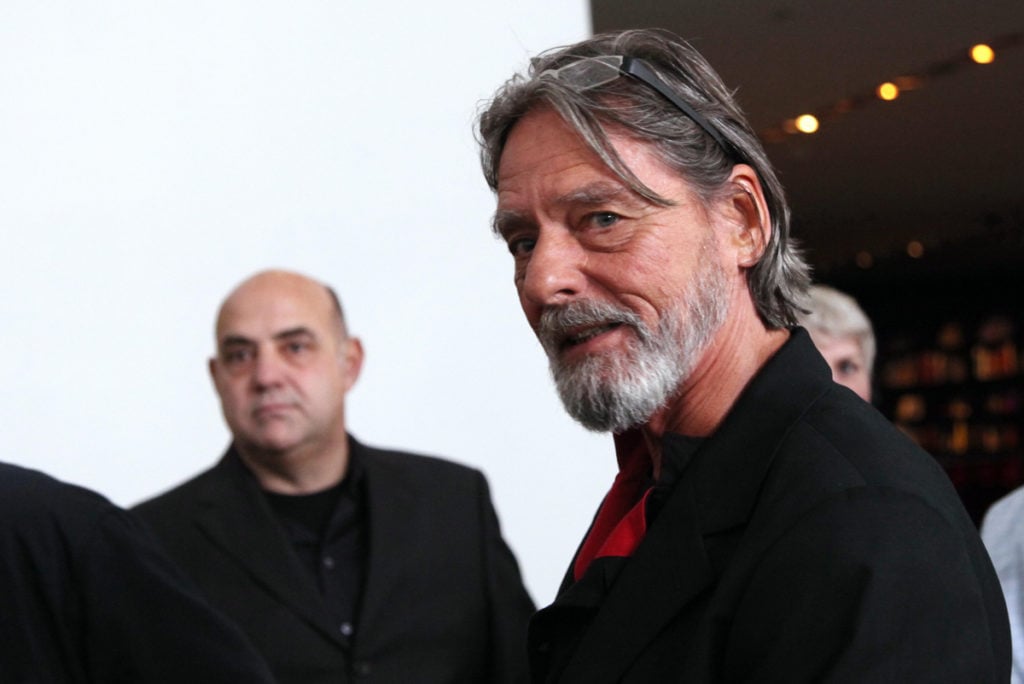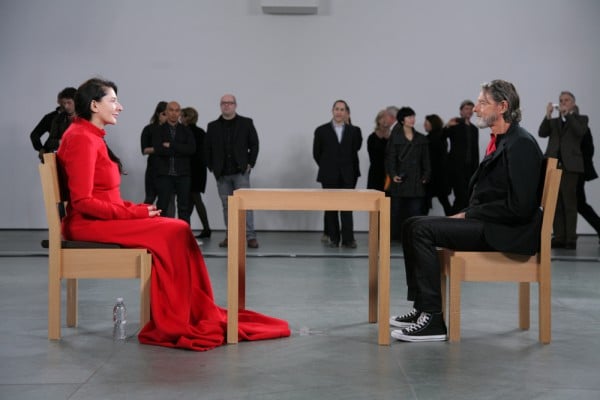Law & Politics
Ulay Wins Case Against Former Collaborator Marina Abramović
Abramović is to pay Ulay over €250,000 she owes in royalties.

Photo: Courtesy of Patrick McMullan.
Abramović is to pay Ulay over €250,000 she owes in royalties.

Caroline Elbaor

Though Ulay Laysiepen—better known simply as “Ulay“—is an independent artist in his own right, he is often associated with performance-powerhouse Marina Abramović due to their decade-long artistic collaboration and romance.
It’s safe to say, however, that the relationship between the two has soured. On Wednesday, a Dutch court ordered Abramović to pay Ulay over €250,000 ($280,500), in a case where the latter accused the former of violating contract over joint works created between 1976–88 (when their relationship famously ended on the Great Wall in China).
“Marina and I shared a period of intense artistic collaboration, and the works from that period are our joint spiritual property. I respect what Marina has achieved since then, and never wanted this confrontation,” Ulay said in a statement provided by his lawyer.
“However, I felt compelled to defend my legacy, my moral rights as a joint author, and my right to agreed royalties from sales of these works,” he continued. “I hope that we can now make peace with respect, put this case behind us, and work together to promote our shared artistic legacy.”
Throughout their ten year relationship, so close were Ulay and Abramović that they referred to themselves as a “two-headed body.” Collaborative works include Relation in Space (1976), in which they repeatedly ran into each other for an hour, Relation in Movement (1977), Imponderabilia (1977, reenacted in 2010), and Rest Energy (1980).

Marina Abramović & Ulay, performing Breathing In/Breathing Out at the Stedelijk Museum in Amsterdam (1978). Photo via: Phaidon
In Breathing In/Breathing Out (performed in Belgrade in 1977 and again in Amsterdam in 1978), the two blocked their nostrils and pressed their mouths together, thus blocking out any inhalation of fresh air and “sharing” each other’s exhalations of carbon dioxide. The performance (lasting roughly nineteen minutes) resulted in both collapsing; it aimed to point at the potential detrimental effects of codependency.
The relationship ended in 1988 with The Great Wall Walk, in which the pair started walking towards each other from opposite ends of the Great Wall in China. Their meeting in the middle marked the dissolution of their status as a couple and collaborators.
Their most famous move, however, arguably occurred during Abramović’s 2010 MoMA installation, The Artist is Present, in which she sat for hours in a chair and invited anybody from the public to join her. Ulay—after years of minimal-to-no contact—unexpectedly took a seat across from her, upon which Abramović cried and took his hand. A video of the interaction soon after went viral.

Marina Abramovic and Ulay at the MoMA. Photo: Scott Rudd
Despite this seemingly peaceful encounter, Ulay brought Abramović to court in 2015, claiming that she violated a contract signed in 1999 regarding works they had created together.
According to The Guardian, Ulay alleged that Abramović failed to provide him with accurate statements of sales, and had paid him only four times in the course of 16 years. The Amsterdam court thus found Ulay entitled to royalties of 20 percent net on sales of their works, thereby requiring Abramović to fork over more than €250,000 (£215,000), in addition to €23,000 in legal costs.
Despite his victory, Ulay compared the experience to that of his battle with cancer: “My cancer ordeal was aggressively threatening my life and the massive legal battle with Abramović was threatening my existence.”